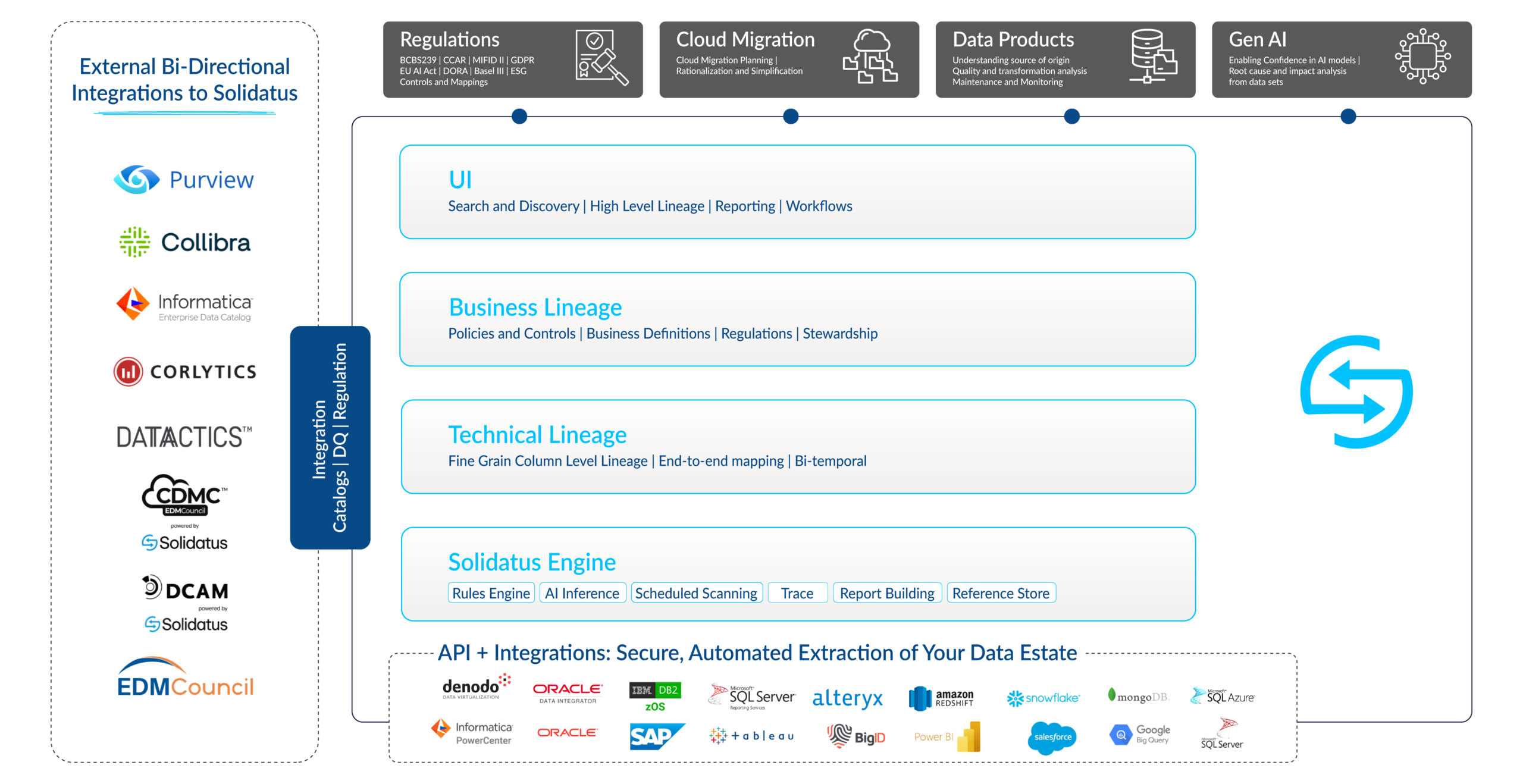
We help you discover, assess and prove the complete journey of your data from its source, through multiple systems, to use – so you can understand and truly trust the data at the foundation of your business.
We do this through a visual map of your data’s journey and transformations through all systems in your organization.
When planning your data lineage solution, you’ll want to consider the different stages for implementation and the people you’ll need at each stage.
See what you’ll do at each high level stage and the Solidatus features grouped within those stages.
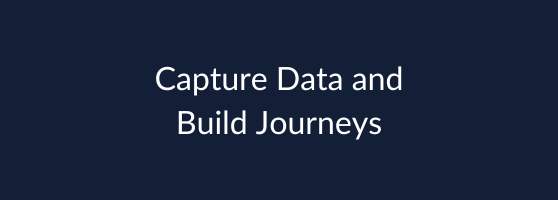
People involved:
Technical Experts
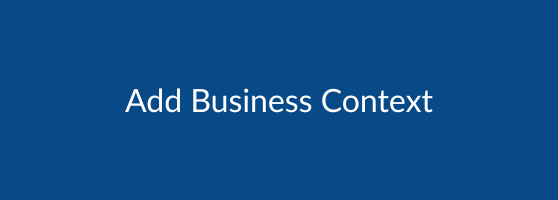
People involved:
Business Users
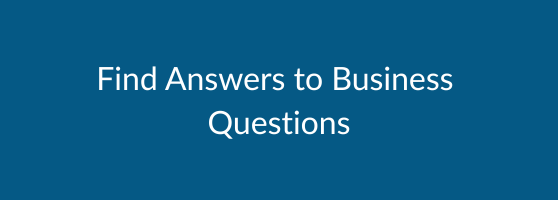
People involved:
Executives and Leadership
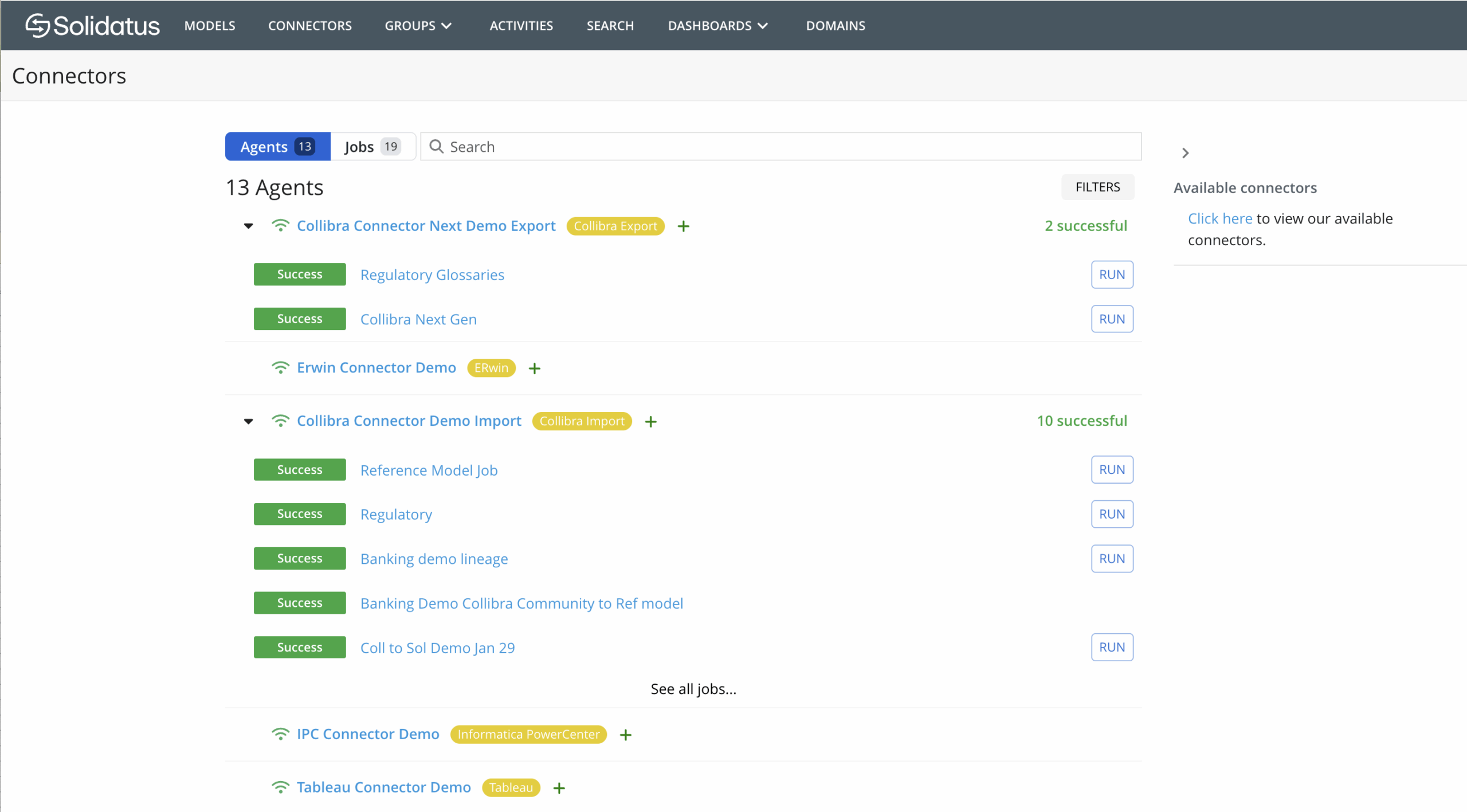
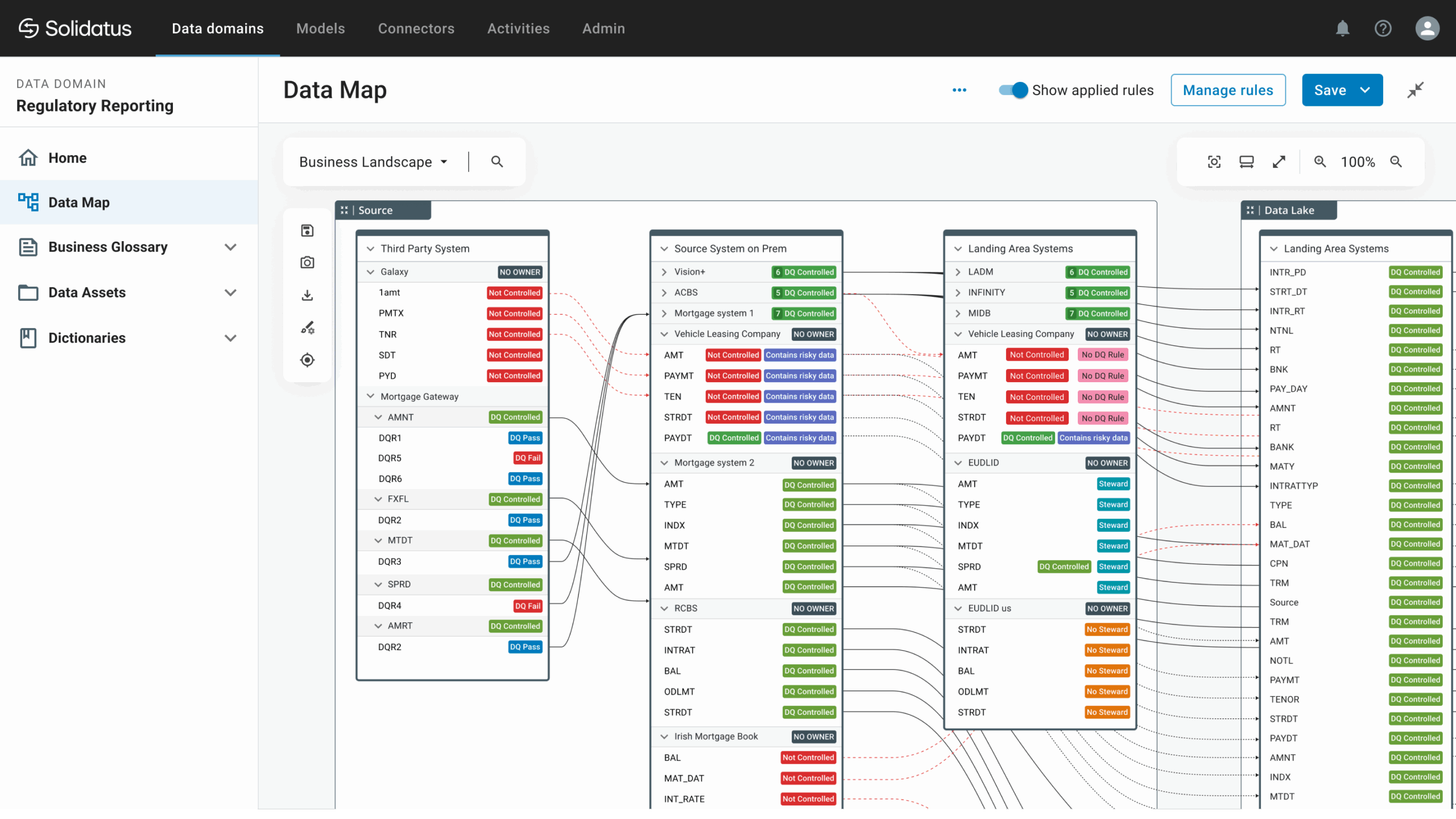
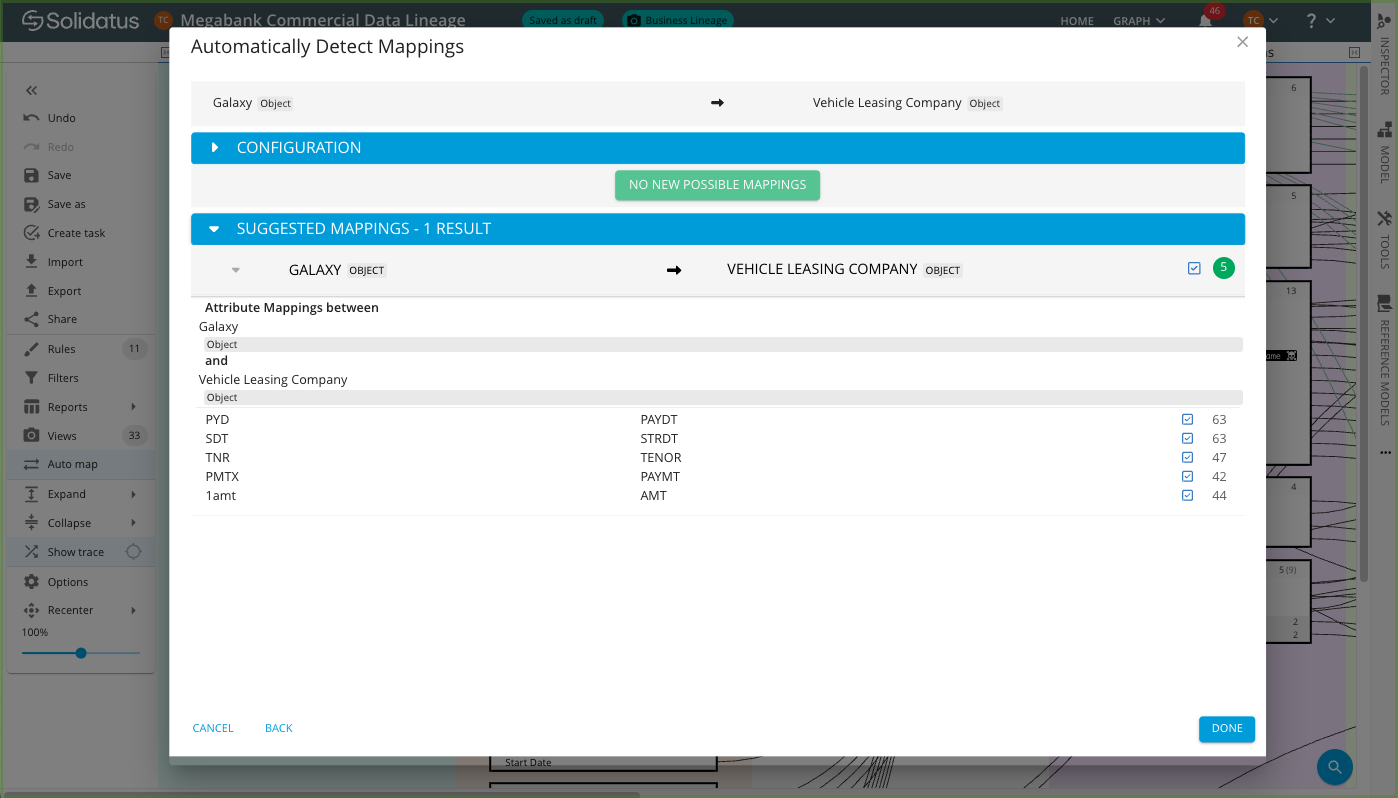
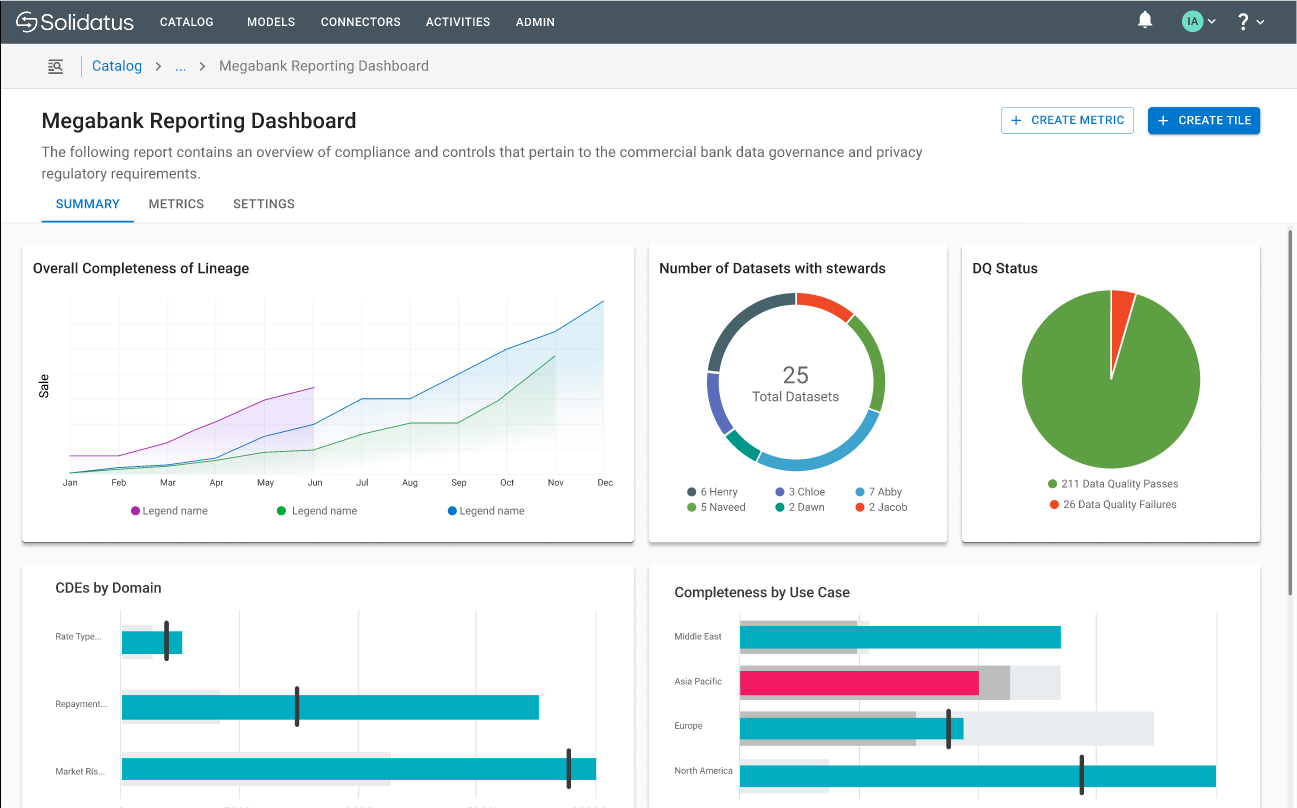
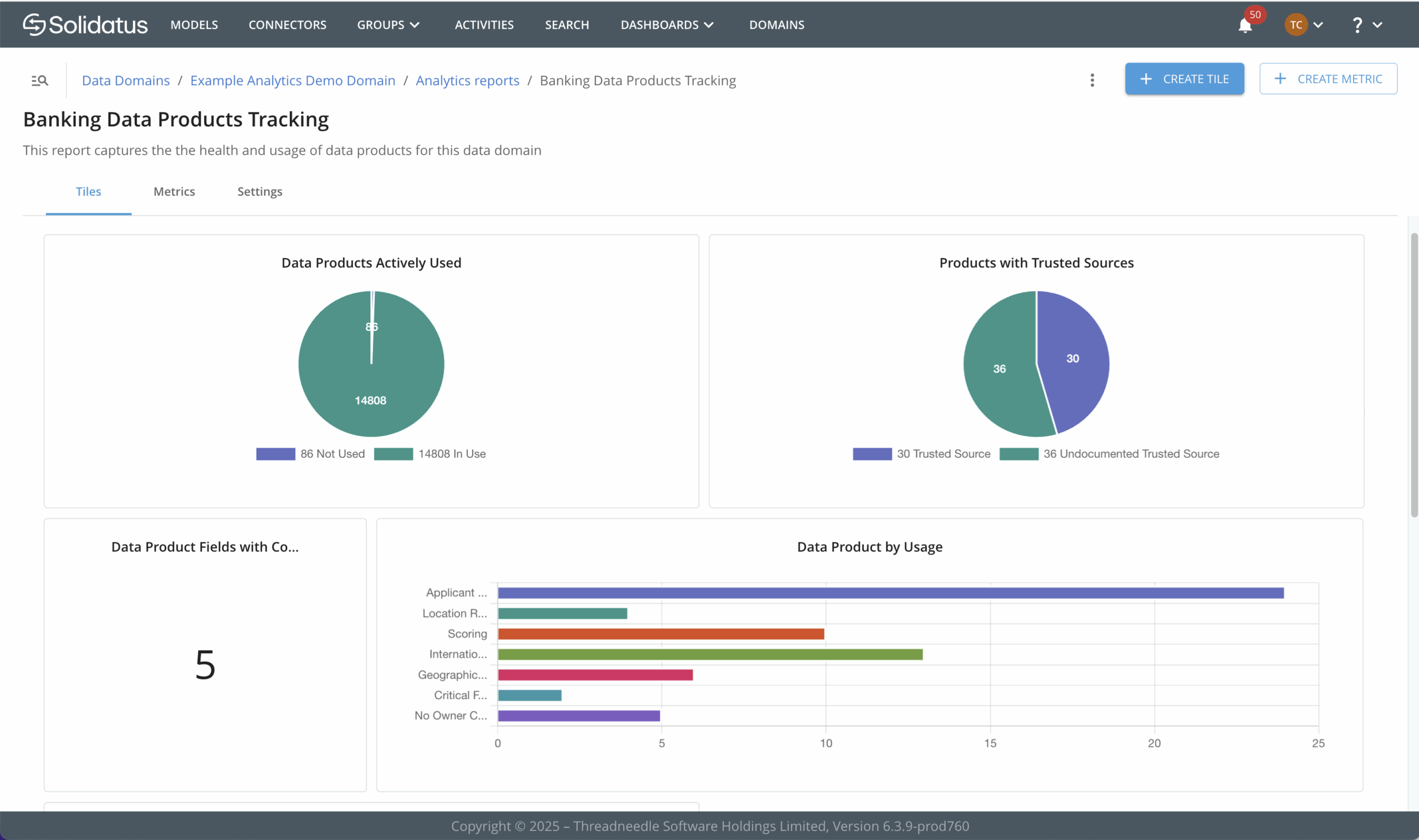
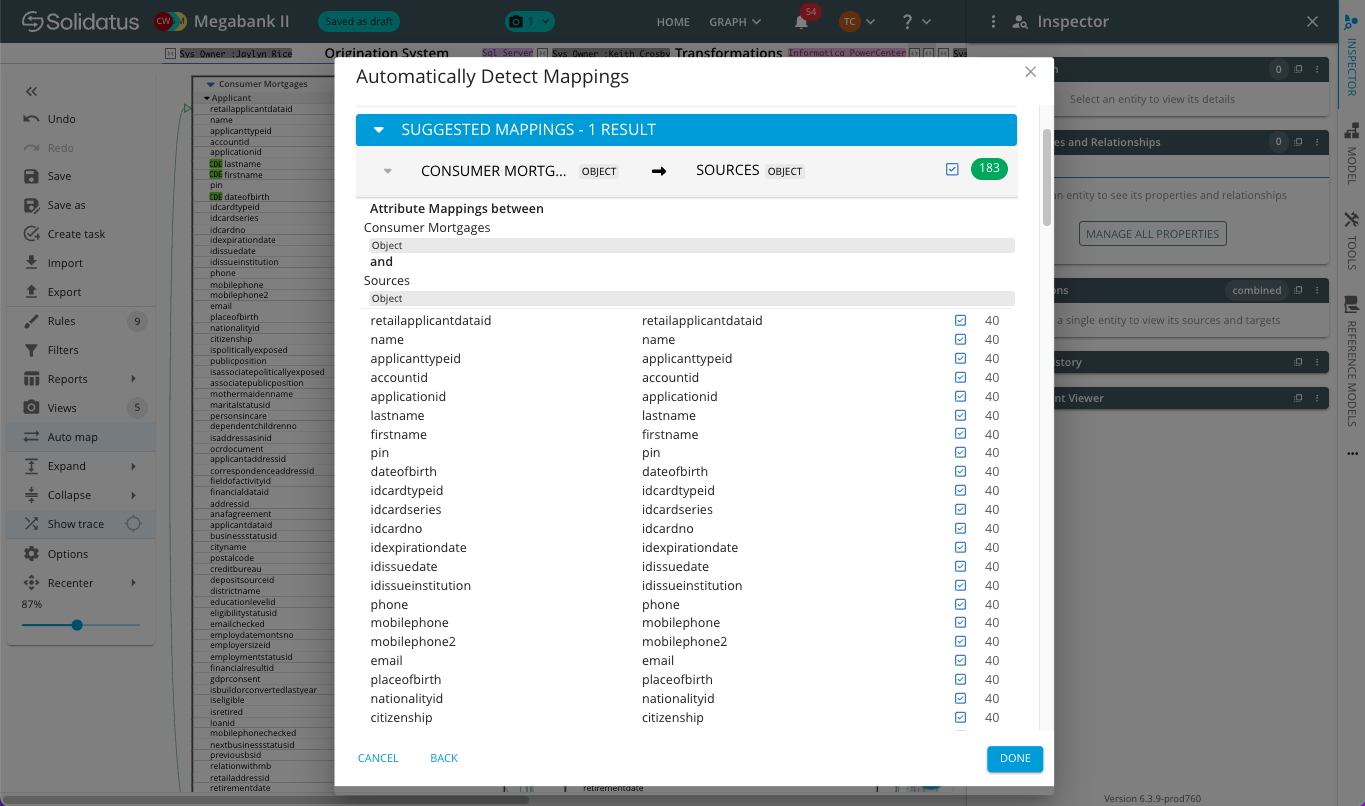
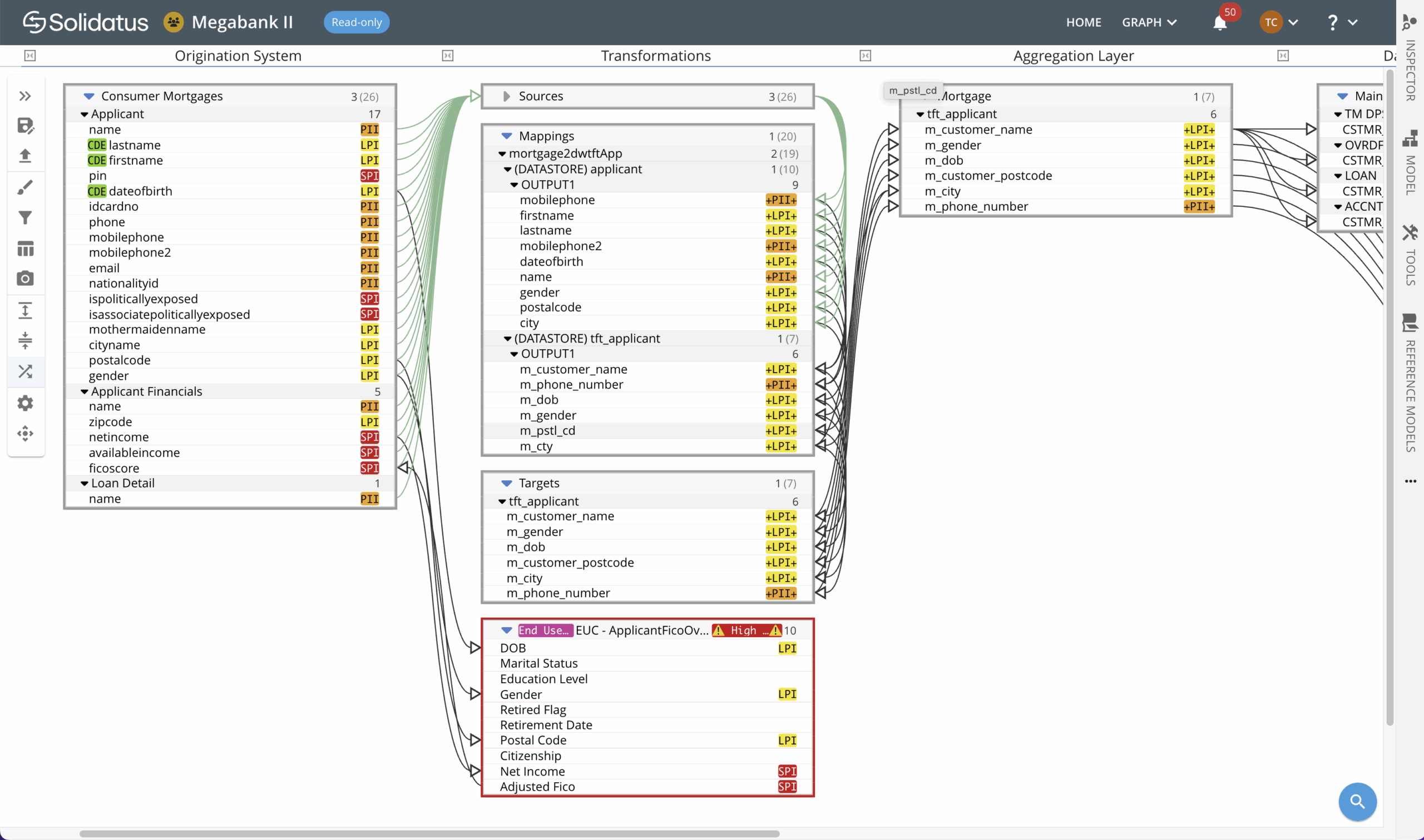
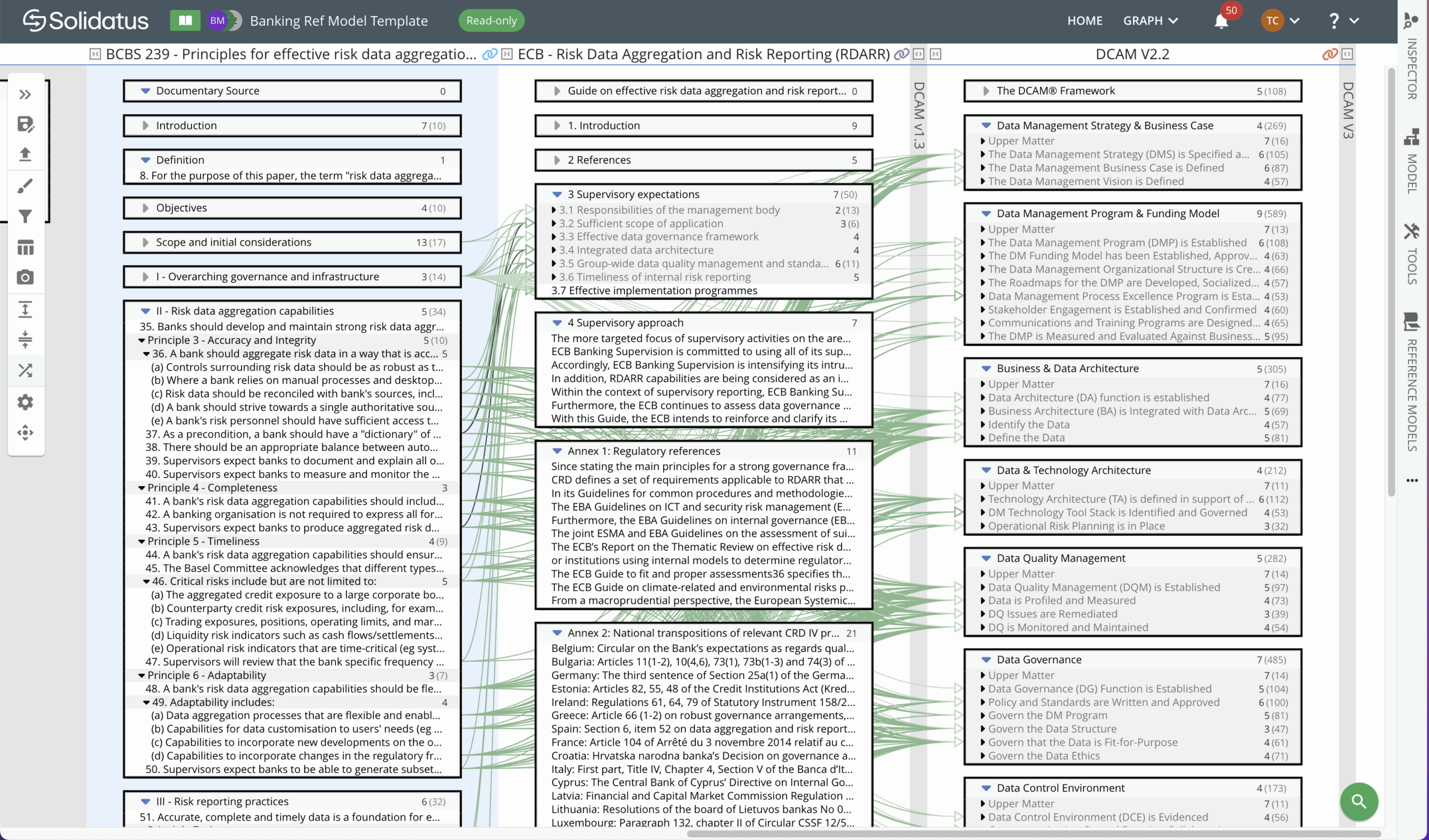
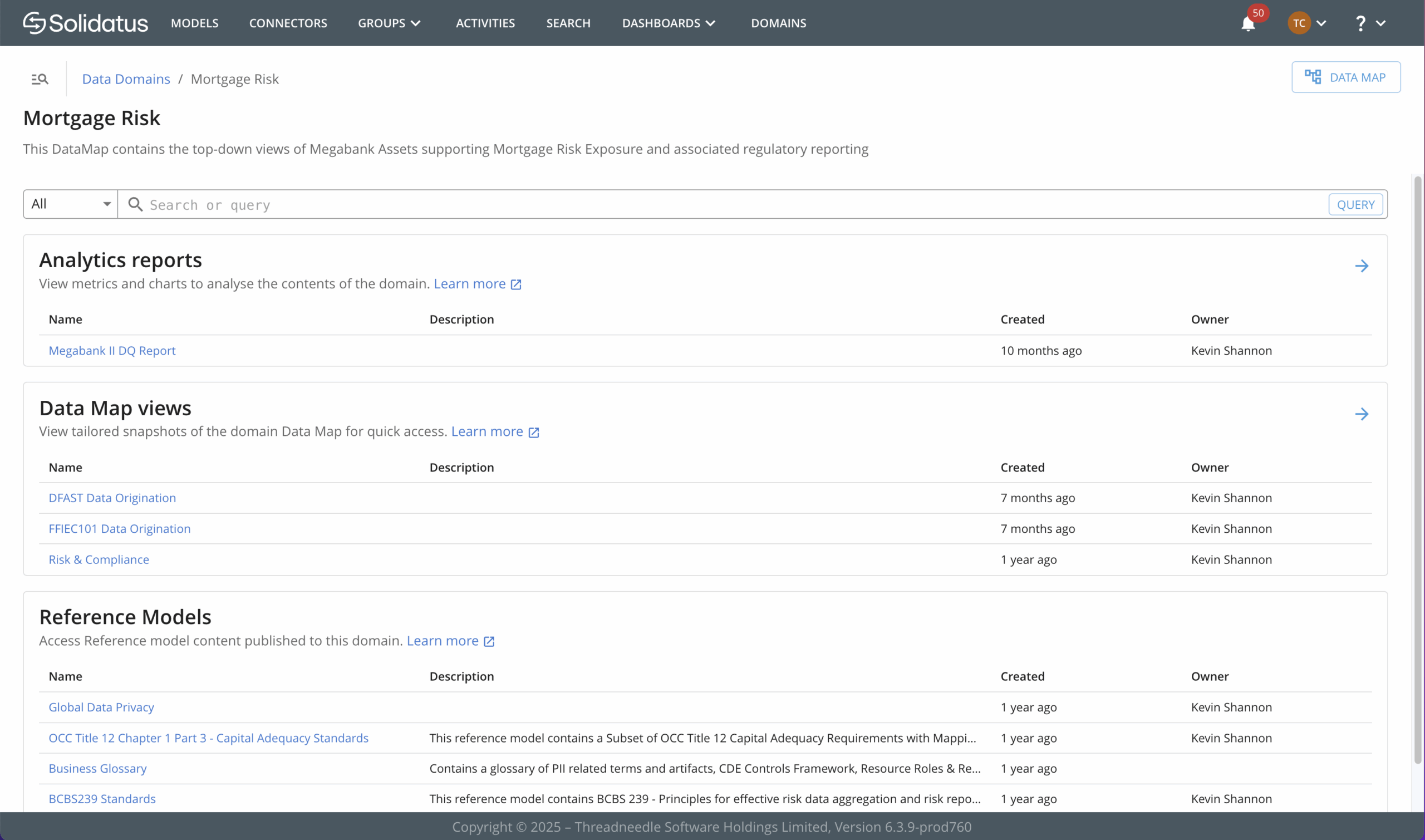
Solidatus is a powerful data lineage solution built on a modern, API-first architecture, making it easy to install and scale. It is inherently designed for enterprise security, scalability and deployment – and offers containerized support microservices. Ingestion, connectivity, orchestration and automation are part of this powerful core engine.
